Defining Workflow in Kanban: Key Elements for Success

The Kanban Guide provides a structured approach to managing workflows, focusing on optimizing the flow of value through the system.
A well-defined workflow is essential for teams aiming to improve efficiency, predictability, and responsiveness.
According to the guide, crafting an effective Definition of Workflow (DoW) requires incorporating six critical elements. In the image below you can see how they all work together:
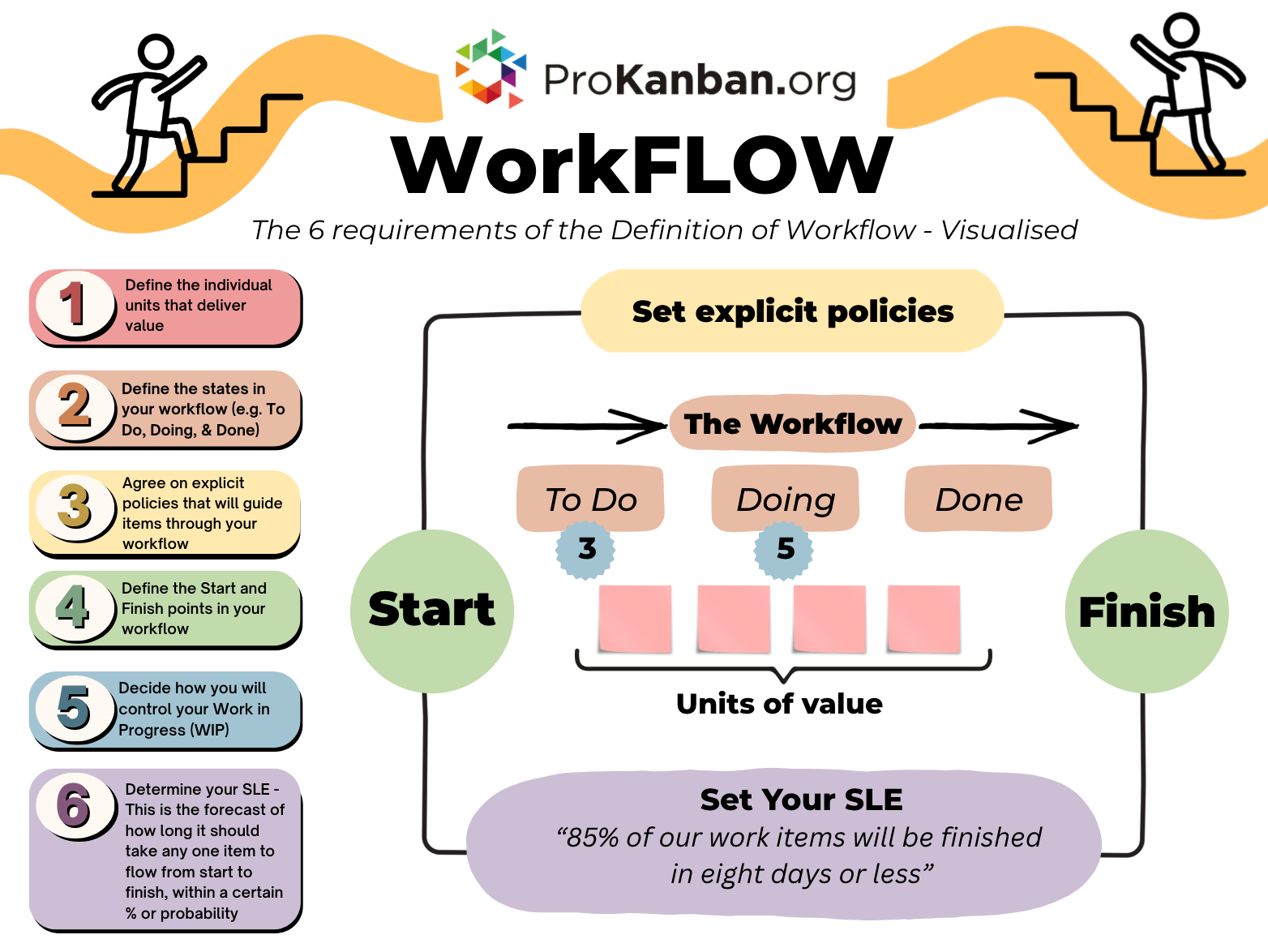
BUT - Let's also dive into each of these components individually, and explore how to implement each of them effectively!
#1 - Identifying Work Items as Units of Value
The foundation of any Kanban workflow is the clear identification of the individual units of value, known as work items. These items represent the tangible outputs that move through the workflow, such as tasks, features, or projects. Defining what constitutes a work item in your context is crucial for understanding the flow of value and for measuring progress.
Identifying Work Items
- Categorize Work: Differentiate work items by type (e.g., feature, bug fix, project) to tailor the workflow to different kinds of work.
- Define Value: Clearly articulate what value each type of work item represents to the customer or the business.

#2 - Defining Workflow States
Workflow states are the distinct phases that a work item moves through from its start point to its finish point. These states help in tracking progress and identifying bottlenecks.
Implementing Workflow States
- Map the Flow: Identify and define the key stages that work items pass through, such as "To Do," "In Progress," "Review," and "Done."
- Visualize Transitions: Make the transition rules between states clear to ensure smooth movement of work items.
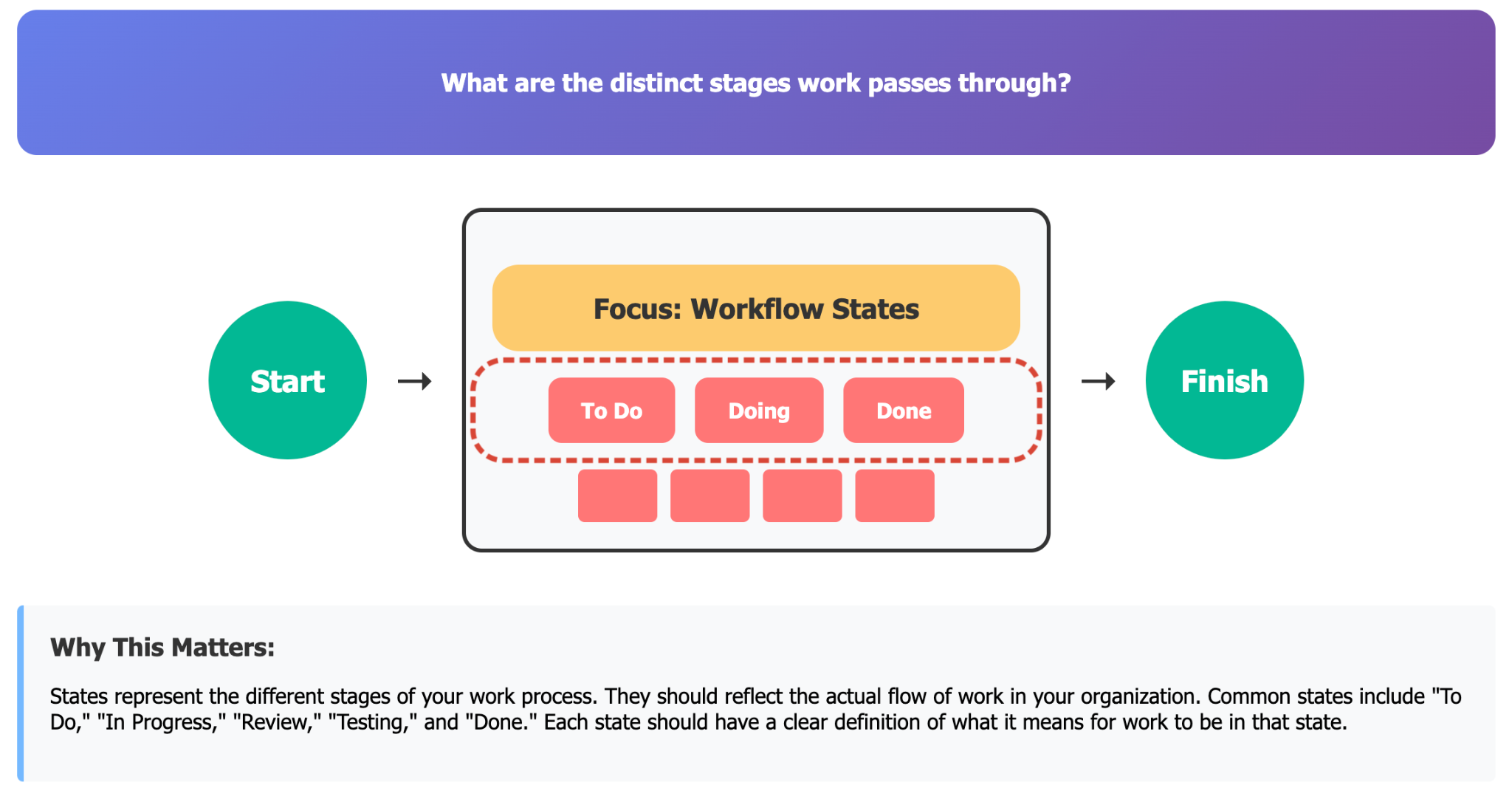
#3 - Establishing Explicit Policies
Explicit policies define how work items can move from one state to another. These policies ensure consistency, reduce ambiguity, and help in managing expectations.
Implementing Explicit Policies
- Document Policies: Clearly document the criteria and steps for moving work items between states.
- Communicate Policies: Ensure all team members are aware of and understand these policies.
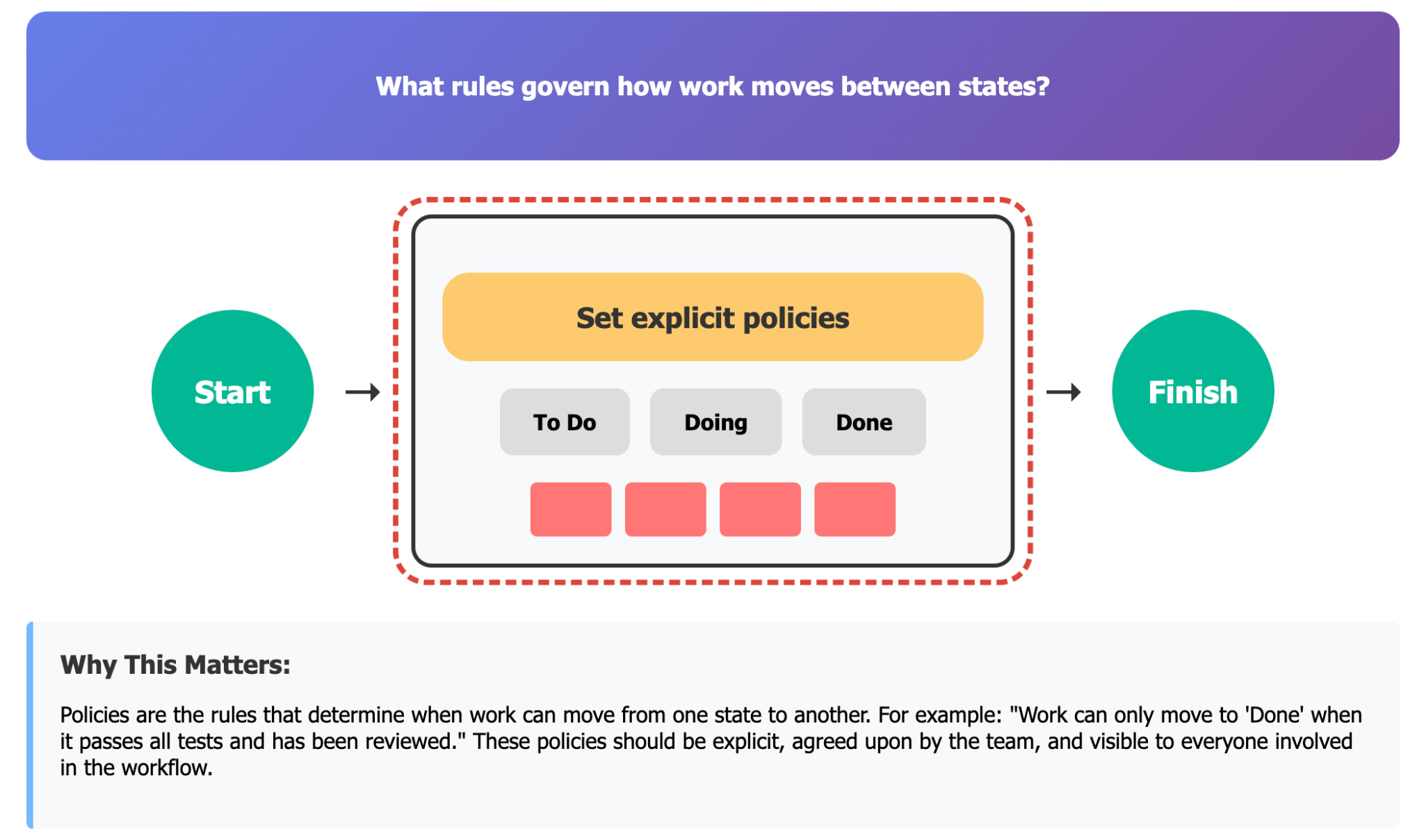
#4 - Defining Start and Finish Points
A clear definition of when work items are officially started and finished is vital. This clarity helps in measuring the flow and efficiency of work through the system. Depending on the type of work item, there may be multiple start and finish points within the workflow.
Implementing Start and Finish Points
- Establish Criteria: Define specific criteria for what constitutes the start and the finish of a work item. For example, a task might be considered started when work actually begins on it, and finished when it meets the acceptance criteria.
- Visualize Points: Use your Kanban board to visually represent different start and finish points for varying types of work items.
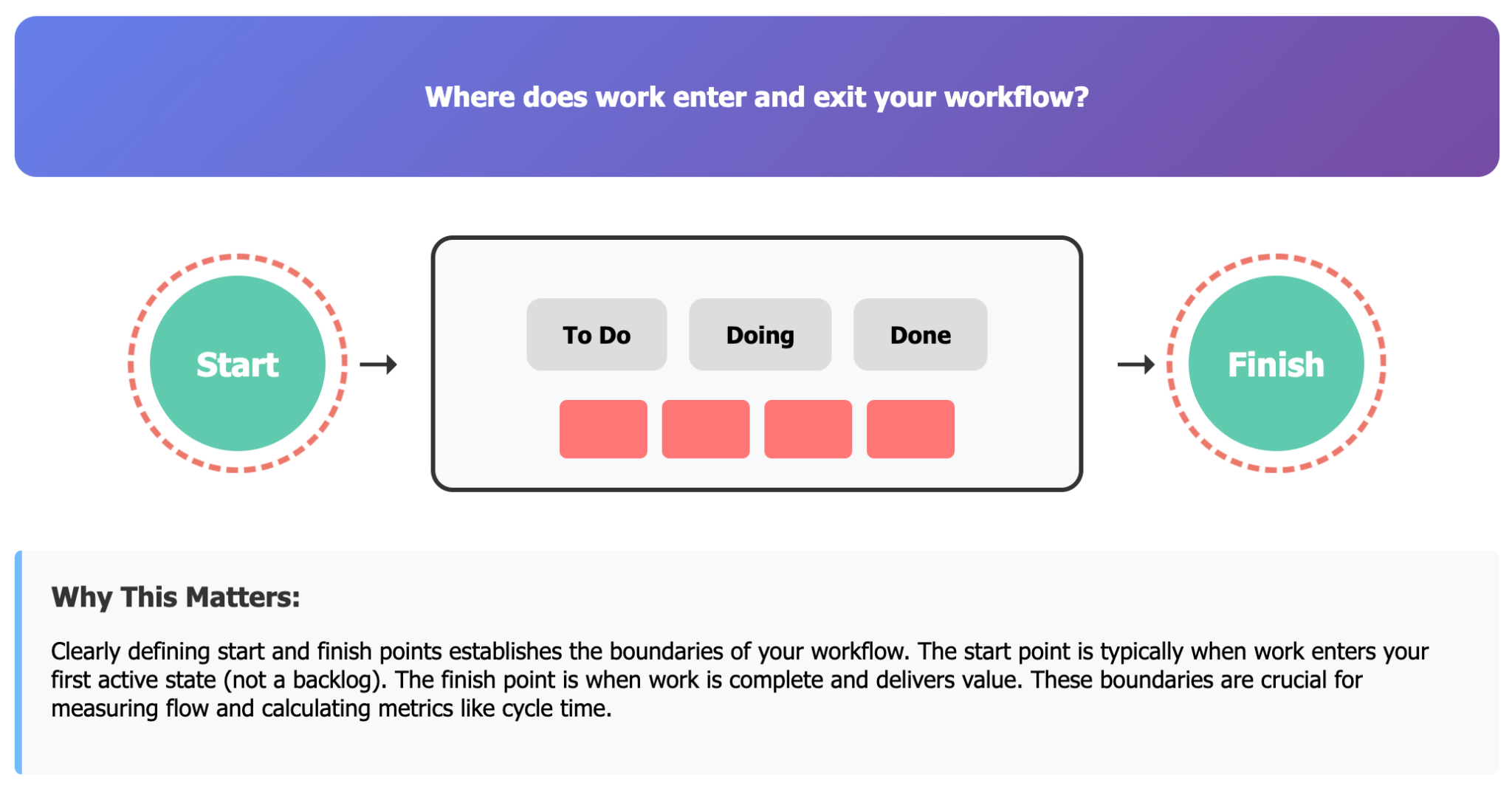
#5 - Controlling Work in Progress (WIP)
Controlling WIP is crucial for maintaining a balanced workflow. Limiting the number of work items in any given state ensures that the team focuses on completing current tasks before taking on new ones, thus improving flow and reducing cycle times.
Implementing WIP Limits
- Set Limits: Determine the maximum number of work items allowed in each state (or across your system) based on team capacity and historical performance.
- Monitor and Adjust: Regularly review WIP limits to ensure they are optimal for current conditions.
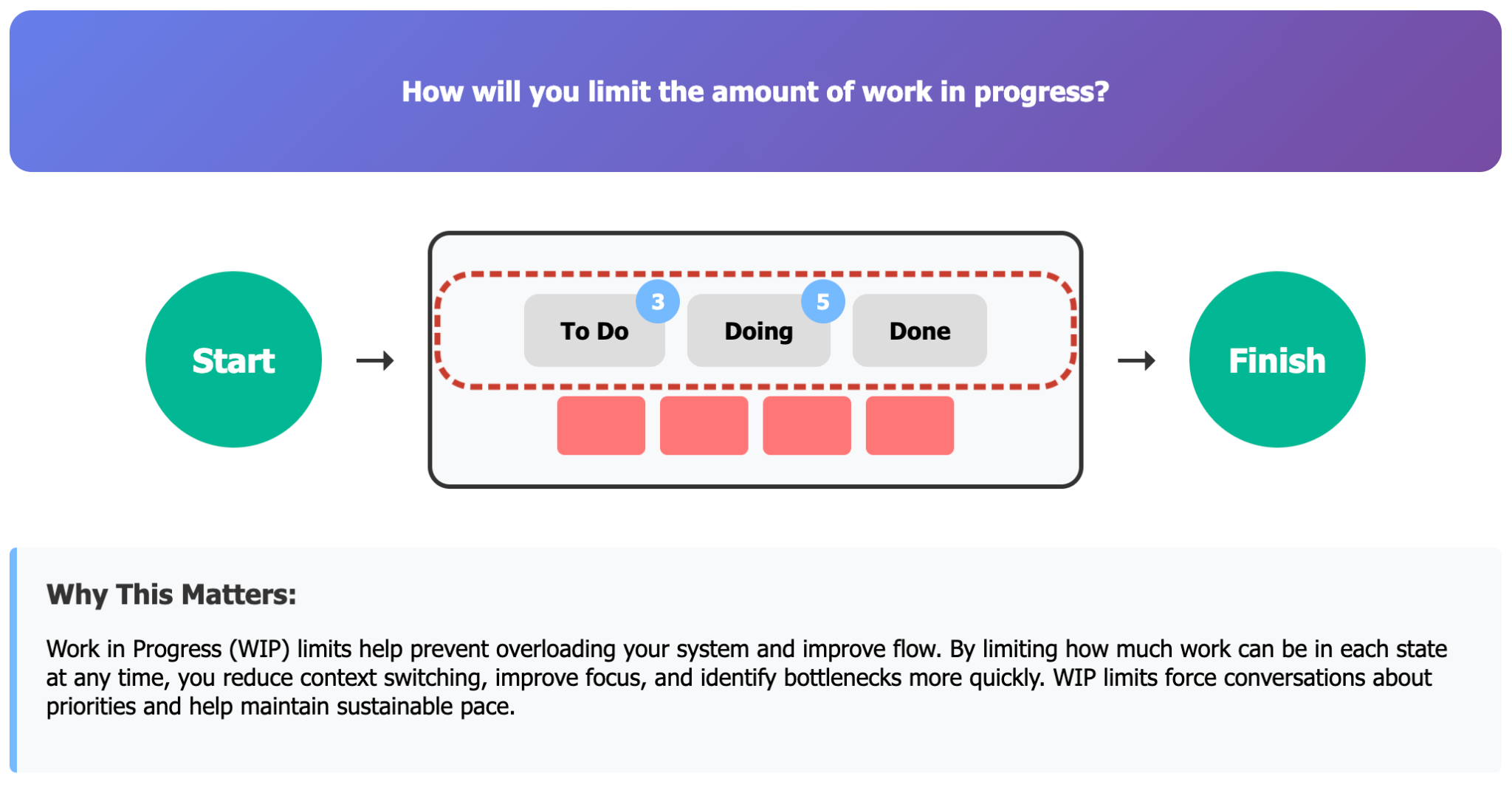
#6 - Setting Service Level Expectations (SLE)
SLEs are forecasts of how long it should take for a work item to flow from started to finished. They help in setting realistic expectations and improving predictability.
Implementing SLEs
- Analyze Historical Data: Use past performance to establish realistic SLEs for different types of work items.
- Review and Adjust: Periodically review SLEs against actual performance and adjust them as necessary to reflect current capabilities.
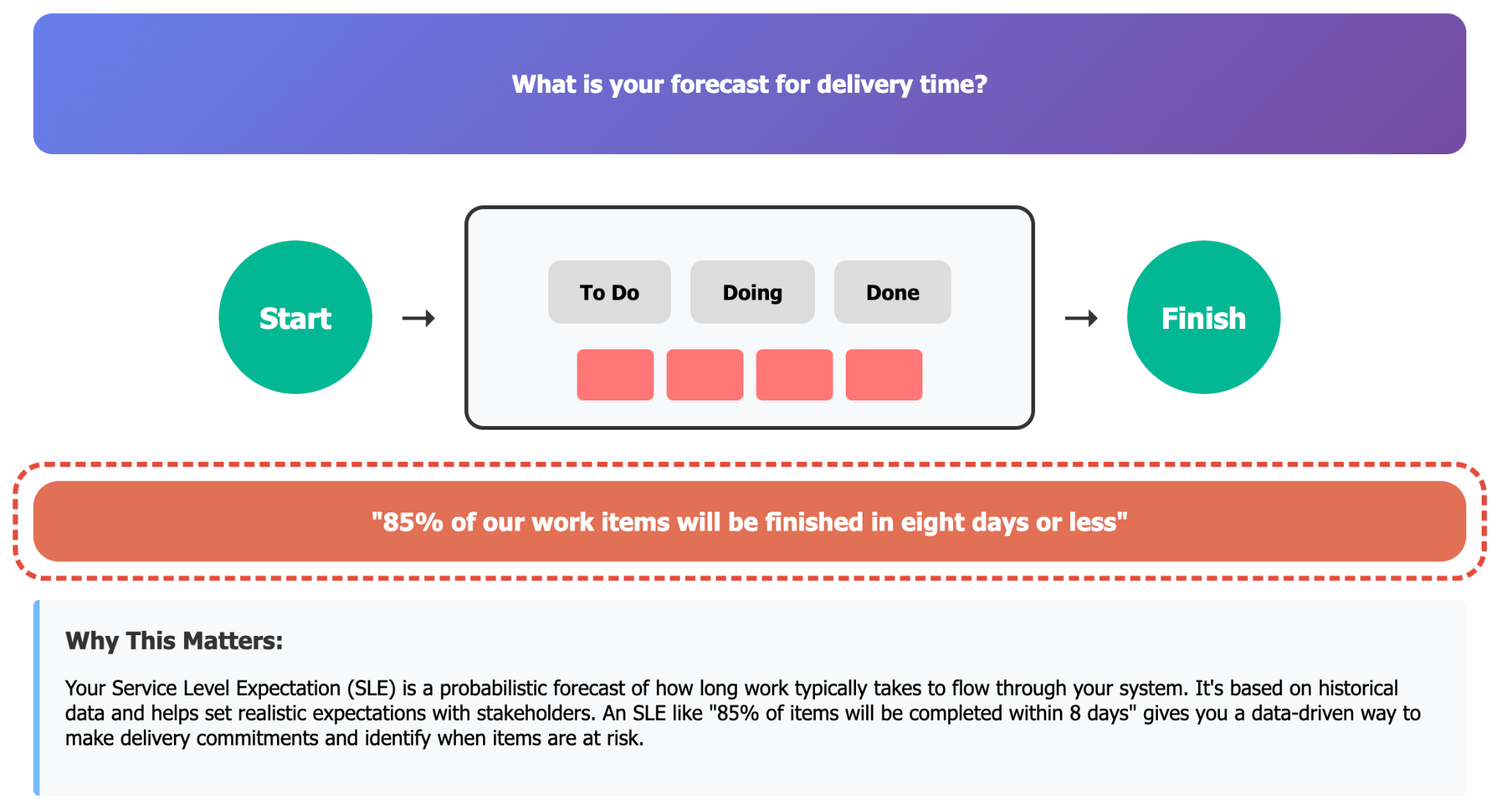
By carefully defining and implementing these six elements, teams can create a robust and efficient workflow that enhances productivity, fosters transparency, and delivers value more predictably.
The Kanban workflow is not just about moving tasks; it's about optimizing the flow of value from inception to delivery, ensuring that every step in the process is aligned with both team and organizational goals.



